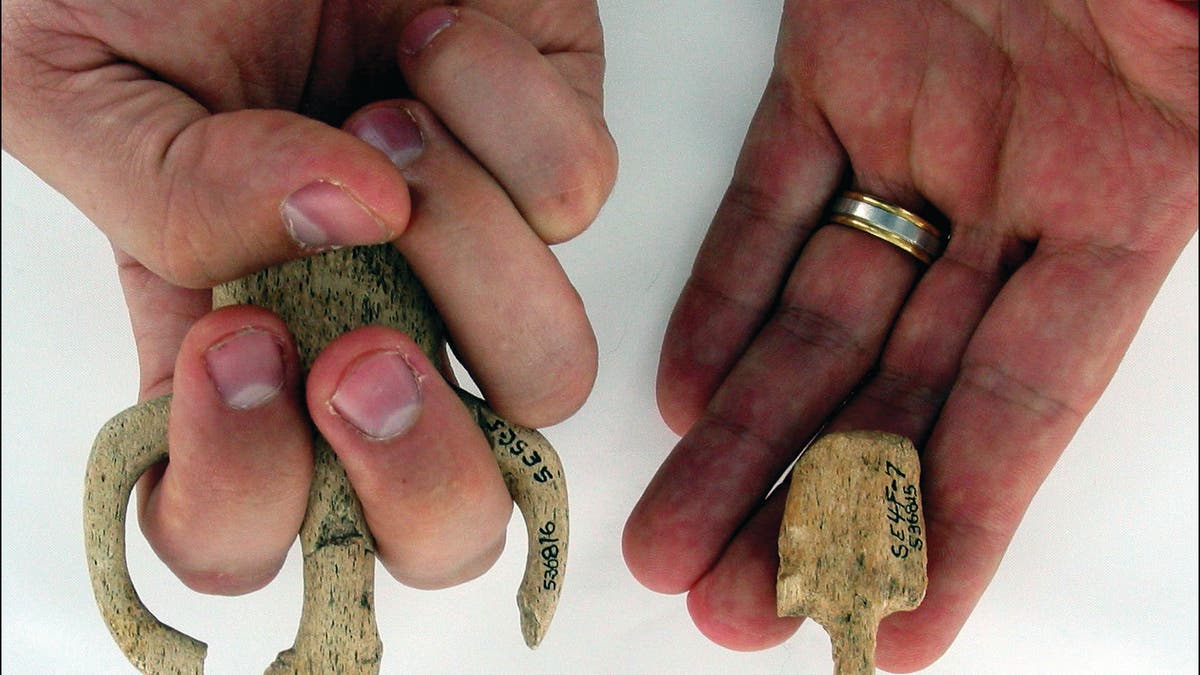Fox News Flash top headlines for Dec. 12
Fox News Flash top headlines for Dec. 12 are here. Check out what's clicking on Foxnews.com
The discovery of child-sized weapons at a site in Oregon is shedding new light on ancient Native American childhood.
A new analysis of items recovered from the Par-Tee archaeological site at the mouth of the Columbia River revealed fragments of a number of atlatls; throwing tools that increased the velocity of darts.
“Until the invention of the bow and arrow, these ancient dart-throwing weapons were the pinnacle of projectile weaponry and their proper use was key to survival,” the researchers said in a statement emailed to Fox News.
Because the atlatls found at Par-Tee varied greatly in size, archaeologists concluded that many of them were designed to be used by children.
PERFECTLY PRESERVED 1,000-YEAR-OLD HUNTER'S DART DISCOVERED IN MELTING ICE
“Basically, they scaled-down their atlatls so they were more easily usable is small hands,” said lead author Robert Losey, associate professor of anthropology at the University of Alberta and lead author of a study on the weapons, in the statement. “This helped children master the use of these weapons.”

Different-sized Atlatl grips discovered at Par-Tee. (Robert J. Losey, & Emily Hull/Antiquity Publications Ltd)
The weapons date back to between 100 and 800 A.D.
A paper on the research is published in the journal Antiquity.
NATIVE AMERICAN BURIAL SITE DISCOVERED DURING CONSTRUCTION WORK ON CALIFORNIA HIGHWAY
In recent years, experts have been unearthing new details of centuries-old Native American sites. An ancient Native American village in Louisiana, for example, is revealing its secrets thanks to new research.

Illustrations of Par-Tee atlatls. (Illustration by E. Hull/)
In another project, archaeologists discovered incredible evidence of a huge Wichita Indian town in Kansas that was once home to 20,000 people. In a separate project, archaeologists discovered an “unprecedented” 7,000-year-old Native American burial site beneath the Gulf of Mexico off the coast of Florida.
The ancient people of North America started building mounds as early as 4,500 B.C., experts say.
'UNIQUE' ANCIENT VILLAGE DISCOVERED ON FLORIDA’S GULF COAST USING DRONES AND LASERS
In 2016, researchers at the Cahokia Mounds near Collinsville, Ill., released a study that sheds new light on the ancient city’s power structure.
CLICK HERE TO GET THE FOX NEWS APP
Last year a perfectly-preserved 1,000-year-old hunter’s dart was discovered in a melting ice patch in Canada’s remote Yukon Territory.
Fox News’ Travis Fedschun contributed to this article.
Follow James Rogers on Twitter @jamesjrogers

